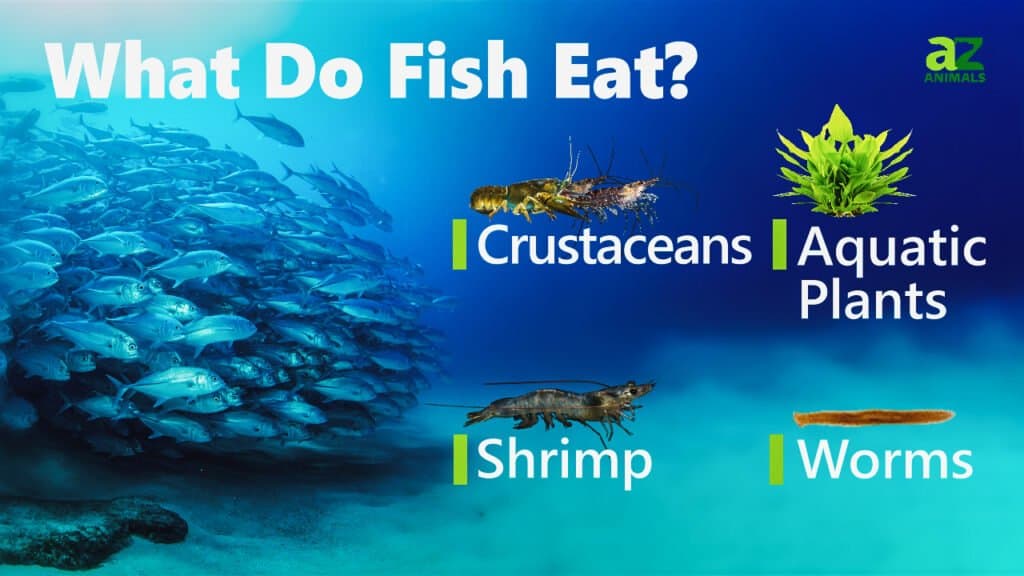Small fish typically eat a variety of foods, including plankton, algae, small invertebrates (such as insects and crustaceans), and other small fish. The specific diet of a small fish can vary depending on its species and habitat.
Know More About: what do small fish eat
What Do Small Fish Eat? Exploring the Diet of Tiny Aquatic Creatures
Fish come in a wide range of sizes, each with its own unique dietary requirements. While larger fish often grab our attention, it’s essential not to overlook the diverse range of small fish swimming beneath the surface. These tiny aquatic creatures have fascinating feeding habits that contribute to the delicate balance of aquatic ecosystems. So, what do small fish eat? Let’s dive into their dietary preferences and unravel the hidden world of these minuscule swimmers.
1. Zooplankton:
One of the primary food sources for small fish is zooplankton. These tiny drifting organisms include microscopic animals like rotifers and small crustaceans such as copepods. Small fish employ an array of feeding strategies to capture zooplankton, including filter feeding or simply opening their mouths while swimming to grab whatever they can. This abundant food source sustains a vast population of small fish worldwide.
2. Phytoplankton:
Phytoplankton, consisting of microscopic algae, make up another substantial part of small fish diets. These algae provide essential nutrients and are a primary energy source for many aquatic organisms. Small fish often graze on phytoplankton directly or consume it indirectly by munching on zooplankton that has already feasted on these microscopic algae.
3. Insects:
Small fish residing in or around freshwater bodies have a variety of insects on their menu. Aquatic insects like mosquito larvae, mayfly nymphs, and water beetles serve as delicious meals for these tiny fish. With their sharp eyesight and quick reflexes, small fish can swiftly dart towards insect prey, ensuring a steady supply of nutrients.
4. Larvae and Fry:
Small fish are known to cannibalize their own species, especially when it comes to consuming larvae and fry. This behavior might seem inexplicable at first glance, but it actually benefits the overall population dynamics and ensures the survival of the fittest. By preying on their own species, small fish help maintain a balance in their population, ensuring only the strongest individuals make it to adulthood.
5. Detritus:
Detritus refers to the decomposing organic matter found at the bottom of aquatic ecosystems. While it may not sound appetizing to us, small fish thrive on a diet that includes this debris. They play a crucial role in the decomposition process, consuming detritus and breaking it down into more manageable forms, making it accessible to other organisms living in the area.
6. Planktonic Larvae:
Many marine species reproduce by releasing planktonic larvae into the water. These tiny larvae are planktonic by nature and serve as an important food source for small fish. As they drift through the water column, small fish seize the opportunity to consume these nutrient-rich larvae, further fueling their growth and development.
As with any ecosystem, the diet of small fish varies depending on their environment and available resources. However, the diverse range of food sources mentioned above highlights their adaptability and their vital role within aquatic ecosystems. By feeding on different organisms and playing multiple ecological roles, small fish contribute to the overall health and equilibrium of aquatic communities.
Understanding what small fish eat helps us appreciate the intricate connections that exist within ecosystems. By shedding light on these often-overlooked species, we can develop a deeper respect for the intricate web of life beneath the water’s surface.
FAQs on what do small fish eat
1. What do small fish eat?
Small fish typically eat plankton, insects, larvae, and small crustaceans that are found in their natural habitat.
2. Can small fish eat other small fish?
Yes, some small fish are carnivorous and feed on other small fish as part of their diet.
3. Do small fish eat plants?
Not all small fish eat plants, but there are herbivorous species that consume algae, aquatic plants, and small plant matter.
4. Are there specific types of food pellets for small fish?
Yes, there are specialized fish pellets available in pet stores that are formulated to meet the nutritional needs of small fish. These pellets are often enriched with essential vitamins and minerals.
5. Can small fish eat flakes or pellets made for larger fish?
Yes, small fish can eat flakes or pellets made for larger fish, but they may have a harder time consuming them due to their size. It’s best to choose food that is appropriately sized for their mouths.
6. What are some natural sources of food for small fish?
Natural sources of food for small fish include algae, insect larvae, brine shrimp, daphnia, and other small invertebrates that can be found in their environment.
7. Can small fish eat frozen or freeze-dried food?
Yes, frozen or freeze-dried foods such as bloodworms, brine shrimp, and daphnia can be suitable food options for small fish. These can be purchased in pet stores and serve as a good source of nutrients.
8. Are there any vegetable options for small fish?
Absolutely! Some small fish species enjoy eating blanched vegetables like spinach, peas, and lettuce. These can be finely chopped and offered as a treat or supplement to their regular diet.
9. How often should I feed my small fish?
Small fish should typically be fed 2-3 times a day, in small portions that they can consume within a few minutes. Overfeeding can lead to water quality issues in their tank.
10. Can small fish survive without feeding them specifically?
In their natural habitat, small fish will find food sources in their environment. However, in an aquarium or controlled setting, it is important to provide them with a balanced diet to ensure their health and longevity.

